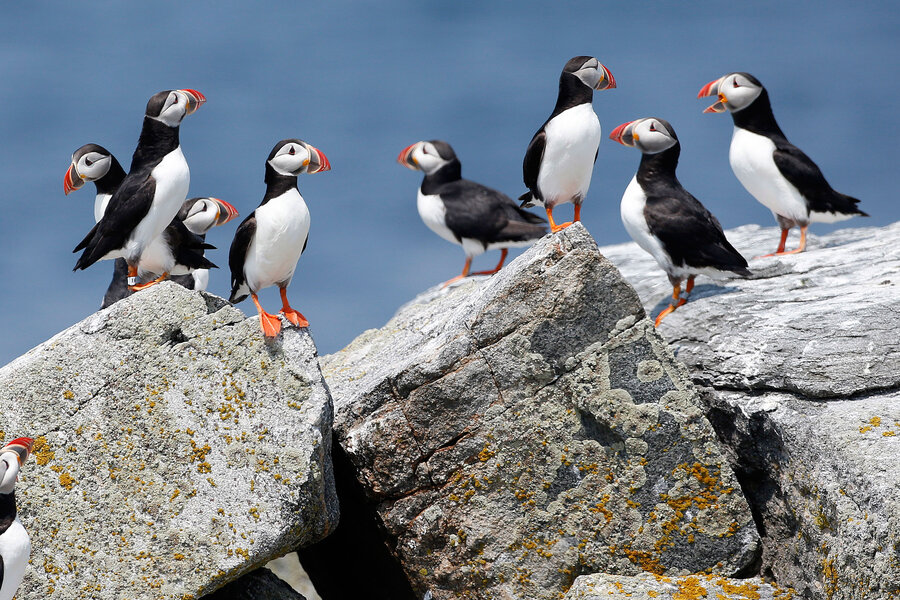Puffin mystery solved! Scientists learn secrets of Maine birds' migration.
Loading...
Birders have finally solved an ornithological mystery that has baffled bird-watchers for years: Where do the Maine's pudgy puffins go every winter?
Puffin sighting are a frequent along the coasts of Maine during the spring breeding season and summer months, but by autumn, the puffins have taken off for open water. And their ultimate destination has been "long a mystery," writes Emma Bryce for the Audubon Society.
"[The puffins] are only on land for about four months; most of the time they’re at sea," said Stephen Kress, director of the Audubon Seabird Restoration Program and founder of Project Puffin.
Now, thanks to data gathered by 19 geolocators on the birds legs, scientists have been able to pinpointed two primary locations where the birds gather offshore. It seems they first swim north to the Gulf of St. Lawrence in Canada, then move to the "coral canyons" about 200 miles southeast of Cape Cod, far off the coast of New York and New Jersey.
The puffins' puzzling disappearance has baffled New England's visiting bird enthusiasts and more conventional tourists alike, as tour groups travel to see Maine's so-called sea-parrots. Looking rather like a penguin, but actually a cousin of the auk, the puffin's red-and-orange beak and awkward walk on land makes it a distinctive resident of Maine's coasts.
This finding not only satisfies the curiosity of Maine's bird-watchers; it could aid the puffin's continuing survival. The species is "threatened" and declining in numbers, so scientists will use the data on its whereabouts to inform conservation efforts.
"Potential threats of commercial fishing, offshore wind and climate change have prompted the need for information on the nonbreeding movements and wintering locations of seabirds that nest in the Gulf of Maine," Mr. Kress told the Associated Press.
The puffin population is roughly 10 million worldwide, according to the International Union for Conservation of Nature, and Maine is the summer home for about 1,000 puffin pairs. The Maine population nearly vanished entirely in the mid-19th century because of egg collectors, but four decades of conservation have helped it to rebound.
Scientists hope to attach more accurate GPS locators to the puffins next summer to improve their understanding of the bird's travels.
“Even well-known birds, like puffins, are still revealing secrets about how and where they live,” Gary Langham, Audubon’s chief scientist, told Ms. Bryce.
This report contains material from the Associated Press.






